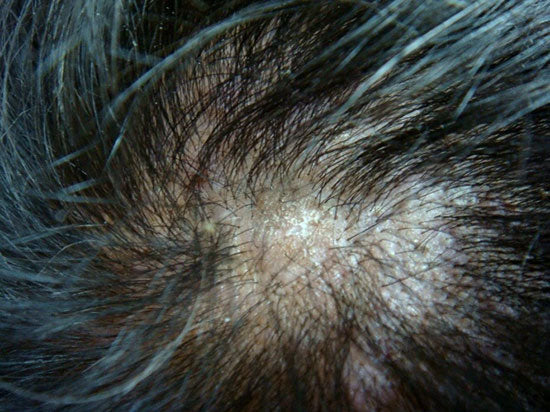You notice a patch of hair loss that wasn't there last month. Around the edges, the skin looks red and angry. There might be some itching or burning, or maybe you feel nothing at all—which almost seems worse. You've tried everything, but the hair just won't grow back.
If this sounds familiar, what you're dealing with might be Lichen Planopilaris. As someone who's diagnosed and treated this condition in countless women, I can tell you this: early recognition changes everything. Let's talk about what this really is and why catching it early matters so much.
What Lichen Planopilaris Actually Does to Your Scalp
Think of LP as an unwanted guest that moves into your scalp and never leaves. Your own immune system mistakenly attacks your hair follicles, seeing them as foreign invaders. This attack creates inflammation that slowly destroys the follicle, replacing it with scar tissue.
Once that scar tissue forms, the damage is permanent. The follicle can never grow hair again. This is why we call it a scarring alopecia—the destruction leaves literal scars on your scalp.
The sneaky part? Sometimes the only symptom is hair loss. No itching, no pain, no redness. The first sign might be those inexplicable patches where hair simply disappears.
How to Recognize the Different Faces of LP
Lichen Planopilaris wears different masks, and knowing which one you're dealing with changes everything.
-
Classic Lichen Planopilaris shows up as patchy hair loss with visible redness and scaling around the follicles. You might notice perifollicular erythema—that medical term simply means redness around each hair follicle that looks like a pink or red halo.
-
Frontal Fibrosing Alopecia often starts as a slow, gradual recession of your hairline. It can look like traction alopecia at first, but it's your immune system attacking the follicles, not your hairstyle. Many women also notice their eyebrows thinning or disappearing entirely.
-
Graham Little Syndrome combines scalp hair loss with body hair loss in other areas. It's like your immune system decides to attack hair follicles everywhere at once.
Why Black Women Need to Pay Extra Attention
Here's what keeps me up at night: Lichen Planopilaris often gets missed in Black women until it's too late. The early redness and scaling can be harder to see on darker skin. The hair loss gets mistaken for alopecia areata or even CCCA.
I've seen too many women come to me after years of misdiagnosis, when the scarring had already become extensive. This is why we use dermatoscopy in our clinic—a special magnified light that lets us see the early signs invisible to the naked eye.
What We Can Actually Do About It
While there's no magic cure for LP, we have powerful ways to slow its progression and save the hair you still have.
The goal is to calm the immune attack on your follicles. We might use topical corticosteroids to reduce inflammation, or oral medications like hydroxychloroquine to quiet your overactive immune system. Newer treatments like JAK inhibitors show real promise for stopping the destruction.
But here's the critical part: treatment works best when we catch LP early. Once scarring sets in, our focus shifts to preserving your remaining hair and considering cosmetic options.
Does This Sound Like What You're Experiencing?
If you have unexplained patches of hair loss, especially with redness, scaling, or itching around the follicles, don't wait. Book your Hair Therapy Evaluation for just $99 and let us help you figure out your scalp issues. The sooner we can diagnose what's happening, the more hair we can potentially save.















